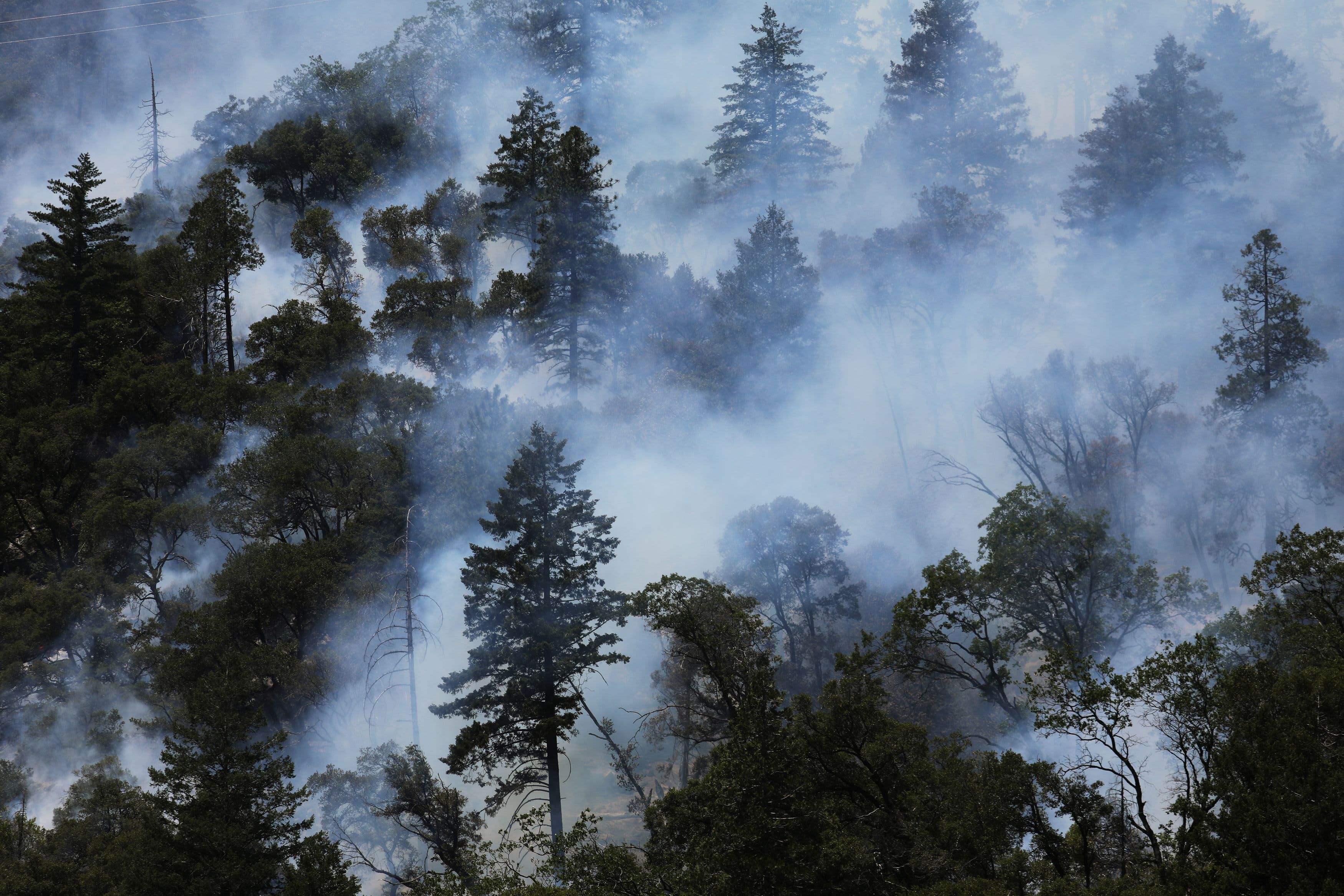
As wildfires occur in the western United States, the immediate risk is to life and property, but they will ultimately affect water supply.
This is one of the reasons why large companies are starting to help fund forest restoration to mitigate water risk.
Water supply for many communities, including large cities, begins in the mountains and national forests. In California, approximately 70% of water begins or flows through national forests, according to Forest Service estimates.
“When we have large-scale fires like this, we get large amounts of erosion that ends up filling dams and reservoirs that store water and help create hydroelectric power,” said Eli Ilano, Tahoe National Forest Forest Supervisor. “That is why there is a huge urgency to work on forests, reduce them and restore them, in order to make them more resistant to climate change and to these large-scale and catastrophic fires.”
After large-scale forest fires, mudslides often occur that fill reservoirs, contaminate water, and reduce their capacity. Cleaning reservoirs is expensive and time consuming. And it’s not just mud.
Trees also help retain water from the mountains and then slowly release it so that dams and reservoirs do not have to deal with a sudden influx of water.
Now companies are considering the idea that they need to help fund forest preservation to protect the water supplies that are essential to their business.
“Companies from all sorts of different sectors, from the beverage sector, the agricultural sector and the technology sector, take all of this seriously and look at how they can be part of the solution,” said Todd Gartner, director of Cities4Forests and WRI’s Natural Infrastructures Initiative.
In the technology sector, for example, many data centers, which need water to cool indoor computer banks, are located in water-stressed areas. For other product manufacturers, water is crucial for all aspects of the process.
“Water is essential to our business. We need it to make our products and we need it to use our products in homes,” said Shannon Quinn, world leader in Procter & Gamble water management.
Last year alone, Procter & Gamble provided a $ 200,000 grant to restore 400 acres in the Eldorado National Forest, which feeds the water supply of the cities of Sacramento and San Francisco Bay.
“The company has a responsibility to address these issues. And for water specifically, I think it’s really a matter of identifying those areas where your business may be at risk,” Quinn said.
Two years ago, the nonprofit organization Blue Forest Conservation Forest launched the first $ 4 million forest resilience bonus.
“It is really a public / private partnership where we have hired investors such as pension plans, insurance companies … they even impact investors such as foundations, to help cover the initial costs of doing this much needed forest restoration task with the ‘main goal is to reduce the risk of catastrophic forest fires,’ Blue Forest founder Zach Knight said at the time.
Private capital was used to thin and restore about 15,000 acres in the Tahoe National Forest. Local water and hydro companies pay investors.
Now, in collaboration with the World Resource Institute, Blue Forest is about to launch its second forest resilience bonus, aimed at 48,000 acres of forest restoration.
The $ 25 million value is more than six times the first issue and investor interest is so strong that there are already about $ 200 million more in anticipation for additional bonds, according to Knight.
The yield on the forest resistance bond is only 4%, but investors are more interested in reducing the risk of costly droughts and disruptions to the water supply.
While most investors are initially foundations and pension funds, Gartner says large corporations are now at the table and plan to invest in upcoming deals. He said he couldn’t call them.
“They are increasingly interested in how this fits into their water goals, their community benefit goals and how they can leverage investments from government, utilities and even other companies to do this work in large-scale and leverage the leverage of multiple actors working to make a large-scale impact, ”he said.
Eldorado National Forest is being affected by the Heat Fire, which has burned more than 200,000 acres and threatens the tourist town of South Lake Tahoe in California. The state has closed all national forests to public access at least until Sept. 17 to reduce fire risks and ensure fire safety.